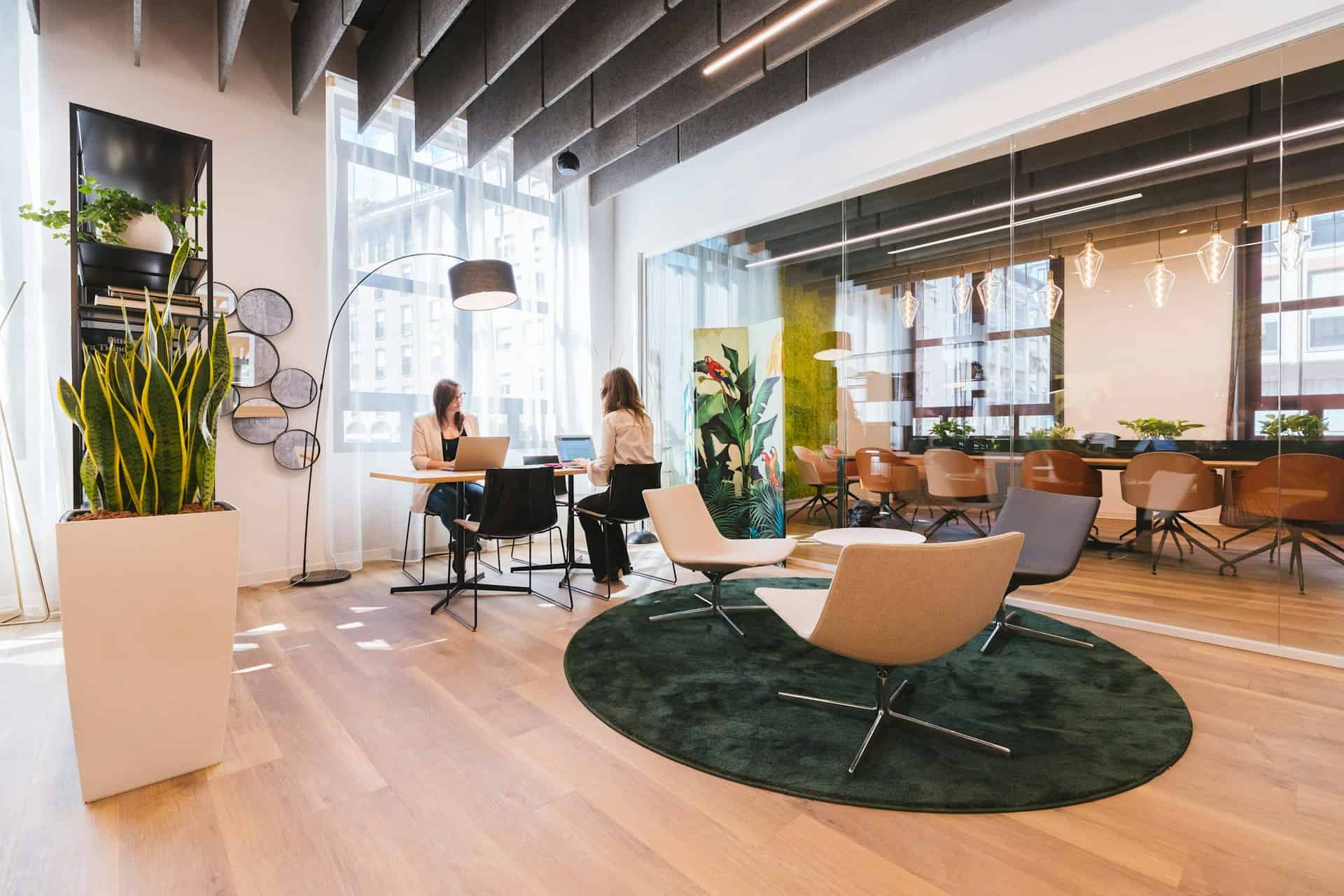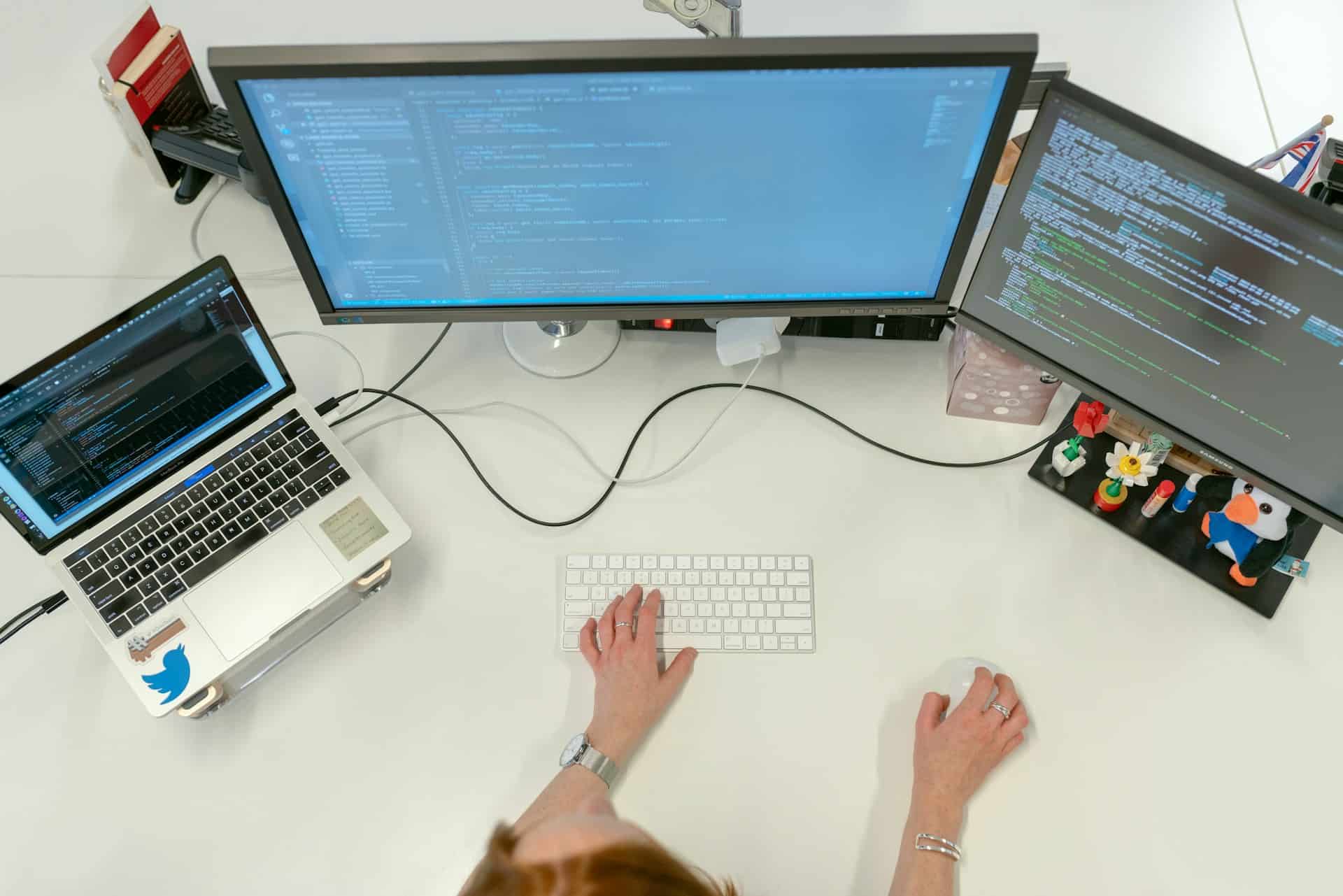The Real Economics Behind Coworking Space Cost
Understanding coworking space cost involves more than just glancing at the monthly rate. It requires a closer look at the various factors contributing to the overall expense and comparing them to the long-term costs of a traditional office space. This careful analysis will help you make smart decisions about your workspace needs and budget.
Deconstructing the Advertised Price
The advertised price for a coworking space usually covers the basic membership fee. However, it’s crucial to understand what this fee includes. Typically, it covers access to the workspace, high-speed internet, utilities, basic amenities like printing and scanning, and sometimes even community events and networking opportunities. But additional costs can add up fast.
Conference room access often comes extra, at an hourly rate. Some spaces charge extra for mail handling, business address services, or parking. For tips on managing your coworking budget, check out this helpful guide: How to master coworking space budgeting.
Hidden Savings Compared to Traditional Leases
While the initial costs of a coworking space might appear similar to a traditional office, the hidden savings can be significant. With a traditional lease, you’re responsible for numerous expenses beyond rent. These include furniture, equipment, maintenance, repairs, cleaning services, and employee amenities like coffee and snacks.
Coworking spaces often bundle these costs into the membership fee, creating a more predictable and manageable expense structure. This is especially helpful for startups and small businesses aiming to minimize overhead.
The Global Coworking Boom and Regional Price Variations
The global coworking space market is experiencing tremendous growth, projected to jump from $22.01 billion in 2024 to $82.12 billion by 2034. This rising demand for flexible workspaces fuels innovation in pricing models and membership options. However, pricing can vary significantly by region.
In the United States, the average monthly cost for an open workspace is approximately $149. A dedicated desk costs around $300, and virtual office services average about $120 ( more on this here Coworking Statistics). This highlights the importance of researching local market rates when evaluating coworking space costs.
Evaluating the Complete Financial Picture
Smart members look beyond the advertised monthly rate and consider the financial picture. They factor in the length of the commitment, the included amenities, and the potential for extra charges. They also analyse their own usage habits to determine the most valuable membership option.
For example, a freelancer needing a workspace a few days a week might find a hot desk membership more cost-effective than a dedicated desk. Some coworking spaces offer discounts for longer-term commitments or multiple memberships, which can significantly affect the overall cost (monthly or quarterly, for example).
Understanding these details is key to maximizing your budget and getting the most out of your coworking experience.
Membership Options: Which Truly Delivers Value For You?
Beyond simply comparing basic prices, the real question is: which coworking membership truly aligns with your individual needs? Let’s explore how successful coworking members find their perfect fit. Understanding the nuances of each option—from hot desks to dedicated workspaces and private offices—is crucial for maximizing your coworking experience.
Understanding Your Workspace Needs
Different professionals thrive in different work environments. Some feel at home in the energetic atmosphere of open-plan layouts, while others require the quiet concentration of a dedicated space. Consider your personal work style and how you best achieve peak productivity.
Do you prefer collaboration and casual interactions, or a more secluded setting? This self-reflection will guide you toward the most suitable membership type.
For example, a freelancer working on focused projects might find a dedicated desk ideal. This setup offers a consistent workspace without the distractions of a shared table. A small team needing frequent collaboration, however, might benefit from a private office to facilitate brainstorming and team meetings while still enjoying the community aspects of a coworking space.

The infographic above shows the key cost factors associated with coworking spaces. As the image highlights, location, amenities, and the type of membership significantly impact the overall cost. Understanding these factors enables a more informed evaluation of the various membership options and their associated value.
Exploring Membership Types and Their Costs
To help you compare, let’s look at a table summarizing the different membership types and their average costs:
To help you compare different coworking options and their associated costs, we’ve compiled the following table:
| Membership Type | U.S. Average Cost | UK Average Cost | Features Included | Best For |
|---|---|---|---|---|
| Hot Desk | $149/month | £120/month | Shared workspace in an open area, access to common amenities | Individuals who need occasional workspace, remote workers, freelancers |
| Dedicated Desk | $350/month | £280/month | Reserved personal desk in a shared environment, access to common amenities | Individuals who prefer a consistent workspace, freelancers, small businesses |
| Private Office | $600/month | £480/month | Enclosed private office space for individuals or teams, access to common amenities | Small teams, startups, businesses requiring privacy and dedicated space |
As you can see, hot desking, the most flexible option, allows you to choose any available workspace in a shared area. This is perfect for those who only need a workspace occasionally or value mobility.
Dedicated desks offer a reserved personal workspace within a shared environment, providing a sense of consistency. Finally, private offices cater to individuals or teams needing a dedicated, enclosed space for enhanced privacy and focused work. Private coworking spaces have higher costs, starting around $600 monthly in the U.S. for a single-occupancy office.
This contrasts with the more affordable open workspace memberships, averaging around $149 per month nationally. Learn more about the cost of coworking spaces at the Launch Workplaces Blog.
The Hidden Value of Flexibility
While cost is a major factor, don’t overlook the hidden value of flexibility. Some memberships offer more adaptability than others. For instance, some coworking spaces provide virtual office options, which can be especially helpful for early-stage ventures. These options provide a business address, mail handling, and access to meeting rooms without requiring a full-time workspace.
This flexibility also extends to scaling your workspace as your needs change. With coworking, you can easily upgrade or downgrade your membership based on your team’s growth or project requirements. This agility is a key advantage compared to traditional leases, which often lock you into long-term agreements. This adaptability is essential for managing the changing demands of today’s work environment. Choosing the right membership not only optimises your coworking space cost but also positions you for increased productivity and success.
Location Factor: Why Geography Dramatically Shifts Your Budget
Location plays a crucial role in real estate, and coworking spaces are no exception. Just as apartment rents in major cities like New York City can dwarf those in smaller towns, the price of a coworking membership fluctuates dramatically based on geography. This variation is due to several factors, including local market trends, demand, and the overall cost of living.
The Global Coworking Landscape: A Tale of Two Cities
Imagine two coworking spaces with identical amenities: high-speed internet, stylish common areas, and 24/7 access. One is in San Francisco, while the other is in a growing Midwestern tech hub. Despite offering the same services, the San Francisco location would likely be far more expensive. This is because of its prime location and the high demand for workspaces in major tech centres.
It’s not just about square footage; it’s about access to a thriving business ecosystem, networking opportunities, and the prestige of a desirable address. On the other hand, emerging markets often offer attractive coworking space rates, making them perfect for budget-conscious entrepreneurs, remote workers, and startups. Read also: How to Find a Short-Term Office Rental.
The Impact on Distributed Teams and Digital Nomads
Understanding these regional price differences is crucial for distributed teams and digital nomads. Smart companies can use these disparities to their advantage. They can establish satellite offices in more affordable locations while maintaining a presence in major hubs. This optimizes their budget without sacrificing access to key markets.
For example, a London-based company might create a remote team in a less expensive European city, benefiting from lower coworking space costs and a wider talent pool. Digital nomads can also choose destinations based on affordability, balancing the desire for vibrant cultural experiences with managing workspace expenses.
ROI: When Higher Prices Deliver Superior Value
The most expensive location isn’t always the best choice. Sometimes, the higher cost in a major city can provide a superior return on investment. This is especially true for businesses that thrive on networking and in-person interactions with clients or investors. A central business district location can provide access to potential partners, industry events, and a concentrated pool of talent. This proximity to opportunity can outweigh the higher cost, leading to greater business growth and profitability.
Navigating Market Saturation and Growth Potential
In the United States, coworking space prices have stabilized but vary significantly by location and membership type as of early 2025. The national median price for an open workspace held steady at $149 per month at the end of 2024. However, some metropolitan areas have much higher costs, with median prices almost double the national average. Markets like Santa Maria, California, Bremerton, Washington, and Poughkeepsie, New York, have median monthly rates for open workspaces around $300. Find more detailed statistics here: National Coworking Report.
This highlights the importance of researching specific markets and understanding whether they are saturated or still have growth potential. Choosing a location with room for expansion can provide significant long-term benefits.

Uncovering the Stealth Costs That Inflate Your Bill
While the advertised monthly fee for a coworking space provides a starting point, it rarely reflects the complete picture. Understanding the potential hidden costs is crucial for accurate budgeting and avoiding unwelcome surprises. These seemingly insignificant expenses can quickly add up, impacting your overall coworking budget significantly.
Common Hidden Costs to Watch Out For
Many new members are surprised by costs beyond the basic membership fee. These often include:
-
Printing Fees: While some coworking spaces include basic printing, going over a set limit often incurs additional per-page fees. This can become a considerable expense for businesses with high printing demands.
-
Conference Room Bookings: Access to meeting rooms and conference spaces often comes at an hourly rate. These fees can accumulate, particularly for teams who frequently hold client meetings or presentations.
-
After-Hours Access: 24/7 access may be limited to specific membership levels or come with extra charges. If you prefer working outside of typical business hours, make sure you understand these policies.
-
Guest Passes: Inviting clients or colleagues might require purchasing guest passes, another potential cost to factor in.
-
Mail and Package Handling: Receiving and sending mail can sometimes involve added fees, particularly for packages or registered mail.
-
Event Fees: Some coworking spaces have separate charges for attending networking events or professional development workshops.
Deciphering Coworking Agreements
Carefully reviewing your coworking agreement is vital. Focus on clauses about additional charges, usage limits, and termination policies. This careful review can prevent unforeseen costs and contractual disagreements later. The location of a coworking space has a big impact on its cost, a pattern observed even in specific markets like coworking spaces in Singapore.
Negotiation Tactics for Savvy Members
Don’t be afraid to negotiate. Experienced coworking members often get better terms by discussing their specific requirements and exploring flexible options. For example, you could negotiate a lower monthly rate for a longer-term commitment or a package that bundles essential services, such as printing or conference room usage.
Transparency in Pricing: A Key Factor
Selecting a coworking space with upfront pricing can significantly simplify your budgeting process. Some providers offer all-inclusive plans that detail every service included and any potential extra charges. This clarity eliminates billing surprises and allows for predictable cost management.
Managing and Tracking Your Usage
Monitoring your use of extra services such as printing and conference rooms helps you control spending. This awareness allows you to anticipate future costs and make smart decisions about how you use resources. You might realize, for example, that buying your own printer makes more financial sense than using the coworking space’s printers. Actively managing your usage helps you maximize the value of your coworking membership.
The Numbers Don’t Lie: Is Coworking Actually Worth It?
For many, coworking spaces offer the appeal of flexibility and a sense of community. But is coworking really worth the cost? Beyond the stylish furniture and networking events, the financial aspect remains suepr important. This section takes a practical look at the finances, comparing the overall costs of coworking with traditional office leases and the home office setup.
Weighing the Costs: Coworking vs. Traditional Offices vs. Home Offices
When considering the cost of a coworking space, it’s important to compare it to other workspace options. Traditional office leases often come with hefty upfront expenses. Think security deposits, furniture purchases, and setting up the necessary infrastructure. Recurring costs like rent, utilities, maintenance, and cleaning services add up quickly. A home office might initially seem like the most budget-friendly route, but it has hidden costs too. These might include higher utility bills, upgrading your internet service, and possibly investing in dedicated office furniture.
Coworking spaces offer a different model, bundling many of these expenses into one membership fee. This can make budgeting more predictable and potentially lower your overall costs, especially for smaller businesses or individuals. It’s paramount to understand the different membership plans available and select the one that best fits your requirements.
When planning your budget, remember to account for your customer acquisition cost, as it directly impacts your profitability.
Quantifying the Benefits: Beyond the Bottom Line
The financial perks of coworking go beyond direct cost savings. Successful businesses understand the importance of increased productivity, which a professional and collaborative environment can foster.
Coworking spaces often offer amenities like high-speed internet, meeting rooms, and printing services, saving you the expense of procuring these individually. Moreover, the networking potential within a coworking space can create valuable business connections and possible partnerships, boosting long-term growth.
Hidden Economic Advantages: Networking, Referrals, and Wellness
Beyond the obvious savings and productivity boosts, coworking spaces offer less tangible economic advantages. The networking within a coworking community can lead to referrals and new business opportunities. Many coworking spaces also prioritize member wellness. They might provide amenities like on-site gyms, healthy snacks, and social gatherings. These perks can improve employee morale and reduce stress, indirectly increasing productivity and potentially lowering healthcare costs.
Calculating Your ROI: A Practical Framework
Figuring out if coworking is financially sound for you requires carefully considering your individual needs and circumstances. Factors such as your team size, projected growth, required amenities, and local market rates for office space all play a role. By comparing the total costs and benefits of coworking with other work arrangements, you can make an informed decision to maximize your return on investment.
For example, a growing business might value the flexibility of a coworking space over the seeming stability of a long-term lease, allowing them to scale their workspace easily. Consider the broader market context as well. The coworking space market was valued at $23.35 billion in 2024, projected to reach $27.64 billion in 2025, reflecting a compound annual growth rate (CAGR) of 18.4%. By 2029, this market is expected to reach $51.42 billion, growing at a CAGR of 16.8%. This impressive growth is fueled by trends like hybrid work culture, workforce mobility, remote work options, corporate utilization, and the demand for adaptable and flexible office designs. Here is a good resource: Coworking Space Cost Analysis.
Case Studies: When Coworking Makes Sense (and When It Doesn’t)
Real-world examples can offer further insight into the financial side of coworking. A startup with limited capital might thrive in a coworking space, taking advantage of shared resources and networking to grow rapidly.
On the other hand, a large, established company with specific security or privacy needs might find a traditional office lease more appropriate. Examining these different scenarios highlights the importance of carefully considering your particular needs and choosing a workspace strategy that aligns with your long-term business goals. Ultimately, understanding the true cost of coworking requires a solid evaluation of both the direct expenses and the less easily measured, but also significant, benefits.
Insider Tactics to Slash Your Coworking Space Cost

Finding the right coworking space involves more than just a trendy location and fast internet. It’s about getting the best value for your money. For savvy professionals, optimizing coworking space cost is a key priority. This involves smart negotiation, understanding market timing, and maximizing the benefits of your membership. Let’s explore some proven tactics used by experienced coworking members to significantly cut their expenses.
Negotiation: Don’t Be Afraid to Ask
Many assume coworking prices are set in stone. However, there’s often flexibility. Don’t hesitate to discuss your specific needs with the coworking space operator. Explore options like longer-term commitments for discounted monthly rates. If you frequently use conference rooms, negotiate a bundled package for a reduced price. This proactive approach can lead to substantial savings.
Timing Is Everything: Capitalize on Occupancy Fluctuations
Coworking spaces experience peaks and valleys in occupancy. Smart members leverage these fluctuations. Inquire about off-season discounts or promotions during slower periods. This can secure a lower cost without compromising on amenities. Also, look out for new member promotions, which often offer significant initial cost reductions.
Membership Sharing: A Smart Approach (Within the Rules)
Sharing a membership can be a cost-effective solution for smaller teams or freelancers who don’t need constant access. However, carefully review the coworking space’s terms of service regarding sharing. Some spaces permit it, while others have stricter policies. If allowed, coordinate schedules with a partner to split the cost and maximize a single membership’s value. This can effectively halve your individual expenses. You might be interested in: How to master remote work best practices.
Optimize Your Space Usage: Get the Most for Your Money
Treat your coworking membership like a gym membership – use it regularly and strategically. Evaluate which amenities you actually need. If you rarely print, consider your own printer instead of using potentially costly coworking services. If you only need occasional meeting rooms, pay-as-you-go might be more economical than a bundled package.
Regionally, costs can differ significantly. In the United Kingdom, dedicated desks average around £210 per month, while open workspaces are about £156 per month. Meeting rooms in the UK are typically around £26 per hour. Ireland tends to have higher rates, with dedicated desks at approximately €277 per month and meeting rooms around €30 per hour. These variations highlight the impact of local market conditions. If you want to explore further, here’s a good link: Coworking Statistics.
To help you visualize potential savings, let’s look at some practical strategies:
Cost-Saving Strategies for Coworking Members
A detailed breakdown of various approaches to reduce coworking expenses with estimated potential savings
| Strategy | Potential Savings | Best For | Implementation Difficulty | Considerations |
|---|---|---|---|---|
| Negotiating a longer-term contract | 5-15% | Long-term members | Low | Reduced flexibility |
| Utilizing off-season discounts | 10-20% | Flexible schedule members | Medium | Availability may be limited |
| Sharing a membership | Up to 50% | Part-time users/small teams | Medium | Requires coordination & trust |
| Opting for pay-as-you-go meeting rooms | 20-30% | Infrequent meeting room users | Low | May be more expensive for frequent use |
| Minimizing printing reliance | 5-10% | Light printing needs | Low | Requires personal printer investment |
This table provides a starting point for identifying cost-saving opportunities. The best strategies will depend on your individual needs and work style.
Commitment Trade-offs: Weigh the Pros and Cons
Longer-term coworking commitments often come with attractive discounts. However, balance the cost savings with your need for flexibility. Longer contracts provide cost certainty but can limit adaptability. If you anticipate business changes, like rapid growth or downsizing, a shorter-term agreement, despite a higher monthly rate, might be more advantageous. This provides greater adaptability and avoids being locked into a space that no longer meets your needs.
What’s Next: The Evolving Landscape of Workspace Pricing
The coworking industry is constantly changing, impacting pricing and memberships. Factors like evolving work habits, new technologies, and the growing need for flexible workspaces are driving this evolution. Let’s look at some key trends shaping the future of coworking costs.
The Rise of Hybrid Work Models
The growing adoption of hybrid work is changing the coworking landscape. Companies are embracing a blend of remote and in-office work, and they’re seeking flexible workspaces to meet their needs. This is leading to new hybrid membership models that combine dedicated desks, hot desks, and private offices. For example, a company might choose a membership with dedicated desks for core team members, while remote employees book hot desks when needed.
Technology Integration and Usage-Based Pricing
Technology is crucial in changing coworking pricing. Advanced booking systems and workspace management software like Cobot enable usage-based pricing. This means members pay only for the specific services and resources they use, offering more flexibility and control over costs. Imagine being charged by the minute for meeting room use or by the number of prints you make, instead of a fixed monthly fee. This allows members to optimize their spending.
Sustainability as a Premium Differentiator
Environmental awareness is rising, making sustainability a key factor in the coworking market. Spaces with eco-friendly designs, energy-efficient features, and sustainable practices attract environmentally conscious businesses. These features might come at a premium, meaning members willing to pay more for a sustainable workspace may see higher costs. For example, a coworking space with LEED certification or solar panels could have higher fees.
Specialized Industry-Focused Spaces
The rise of industry-focused coworking spaces is another trend. These spaces cater to specific industries like technology, creative arts, or healthcare. They offer tailored amenities and encourage industry-specific networking. Their pricing differs from general coworking spaces, often commanding higher prices due to specialized resources and networking opportunities. For example, a space for tech startups might include software development tools or mentorship programs, justifying higher fees.
Balancing Premium Amenities with Accessibility
Coworking operators face the challenge of balancing premium amenities with accessibility. High-end amenities like on-site gyms or gourmet coffee bars attract members, but they also increase costs. Successful operators are finding creative ways to offer varied membership options for different budgets while still delivering high-quality services. This could mean tiered memberships with different access levels to premium amenities, ensuring affordability for a wider range of people.
The Future of Coworking Business Models
Expect further innovation in coworking business models in the coming years. Models focusing on affordability and quality are promising. These may include flexible membership plans, shared workspace arrangements, and community-driven initiatives.
Coworking evolving models will create more choices for individuals and businesses seeking cost-effective, high-quality workspaces, further changing the cost landscape.
Ready to explore flexible workspace options that fit your budget? Visit deskhop to discover a range of coworking spaces and book hourly work stations, offering ultimate flexibility for remote workers, digital nomads, and freelancers.





